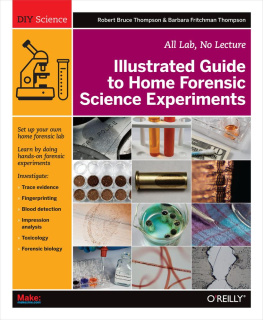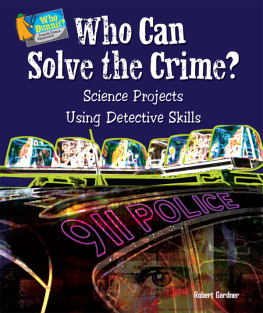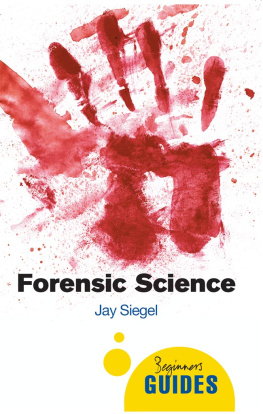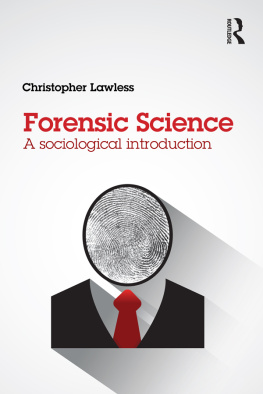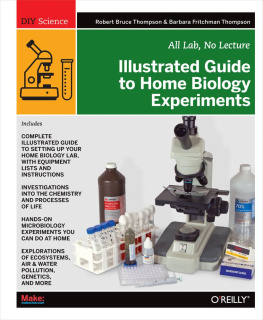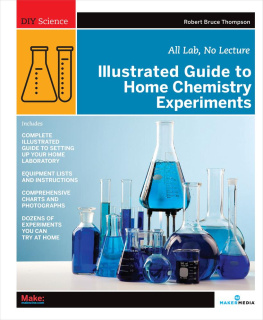Preface
Youre reading this preface, so its a fair assumption that youre interested in forensic science. Youre in good company. For more than one hundred years, forensic science has fascinated a lot of people. Popular interest in forensic science started with the detective stories of Edgar Allen Poe and Wilkie Collins in the mid-19th century, and got a major boost in 1887 when Arthur Conan Doyle published the first of his immensely popular series of Sherlock Holmes stories. Its popularity continued to build through the early- to mid-20th century with the publication of hundreds of forensic-based mystery novels by such bestselling Golden Age authors as Agatha Christie, R. Austin Freeman, and many others. Forensic-themed novels from such authors as Patricia Cornwell, Kathy Reichs, and Tess Gerritsen continue to top the bestseller lists today.
Hollywood recognized the popular interest in forensic science and has produced hundreds of films in which forensic sciencesometimes accurately portrayed, but more often notplays a central role. Sherlock Holmes has been featured in many films, as have other fictional forensic experts such as Freemans Dr. John Evelyn Thorndyke. Nor were television producers unaware of this popular fascination with forensic science. In 1965, the television series The F.B.I. premiered on ABC. Based loosely on the 1959 film, The FBI Story , this long-running series was the first television program that portrayed forensic science realistically and regularly. Even better, it generally got the science right, which may be no small part of why it became a top-10 series.
The F.B.I. was soon followed by a television series that did more than simply feature aspects of forensic science. In 1976, NBC introduced Quincy, M.E. , a television series with forensic science at its very core and a forensic pathologist as the lead character. Like The F.B.I. before it, Quincy, M.E. quickly became a top-10 hit. It lasted well into the 1980s, and set the stage for a plethora of forensic-based television programs, from cable series such as Dexter and Waking the Dead to mainstream network series like Bones , Crossing Jordan , NCIS , and the CSI franchise.
If your only knowledge of forensic science comes from watching CSI and similar programs, you may wonder whether modern forensic science is just a matter of white-smocked acolytes and hard-bodied assistants awaiting answers from expensive high-tech instruments, which answers they invariably get in time to solve the crime before the closing credits roll. The reality is far different. Sherlock Holmes with his magnifying glass and Dr. John Evelyn Thorndyke with his microscope and lab bench are much more realistic representations of actual day-to-day forensic science work.
Heres a startling fact: the vast majority of forensic work, even today, is done with low-tech procedures that would be familiar to a forensic scientist of 100 years ago. For every suspect illicit drug sample that is analyzed on a $100,000 spectrometer, hundreds of such samples are analyzed by using presumptive color spot tests, a technology that dates back to the 19th century. For every specimen examined with a $1,000,000 scanning electron microscope, hundreds or thousands of specimens are examined with ordinary optical microscopes.
Thats not to say that all of that expensive equipment is useless. Far from it. Instrumental analysis allows todays forensic scientists to do things that were unimaginable just a few years ago, laying bare secrets that formerly would have remained forever hidden. A forensic scientist from 100 ago would have regarded todays instruments as nothing short of magic.
But these instruments arent cheap, which means there cant be a full selection of instruments on every forensic scientists lab bench. Also, instrumental analyses may be time-consumingboth in terms of preparing specimens for testing and in time needed to run the testand therefore impractical for analyzing many questioned specimens in a short time. For these reasons, most preliminary screening is done with fast, cheap, low-tech procedures such as color tests and optical microscopes, with the slower, more expensive, instrumental methods reserved for confirmatory tests.
And thats all to the good for anyone whos interested in doing real forensic science, instead of just reading about it. Presumably, if youve read this far, that includes you. You dont need a multi-million dollar lab to do real, useful forensic investigations. All you need are some chemicals and basic equipment, much of which can be found around the home, improvised, or purchased inexpensively. There are exceptions, of course. Youll need a decent microscopethe fundamental tool of the forensic scientistbut even an inexpensive student model will serve. Youll need some basic lab equipment and some specialty chemicals, all of which can be purchased from specialty lab supply vendors and law-enforcement forensics supply vendors.
Note
In fact, to make it as easy and inexpensive as possible to acquire the special equipment and chemicals needed for many of the procedures in this book, we sell a customized kit through our company, The Home Scientist, LLC ( www.thehomescientist.com ). You dont need to buy the kit to do the procedures; we provide complete details about what youll need, and how to make up special reagents yourself. All of the equipment and reagents are readily available from numerous online sources. If you intend to perform only a few of the procedures in this book, it may be less expensive to buy what you need piecemeal. On the other hand, if you plan to do many (or even several) of the procedures, itll probably be less expensive to buy the kit.

